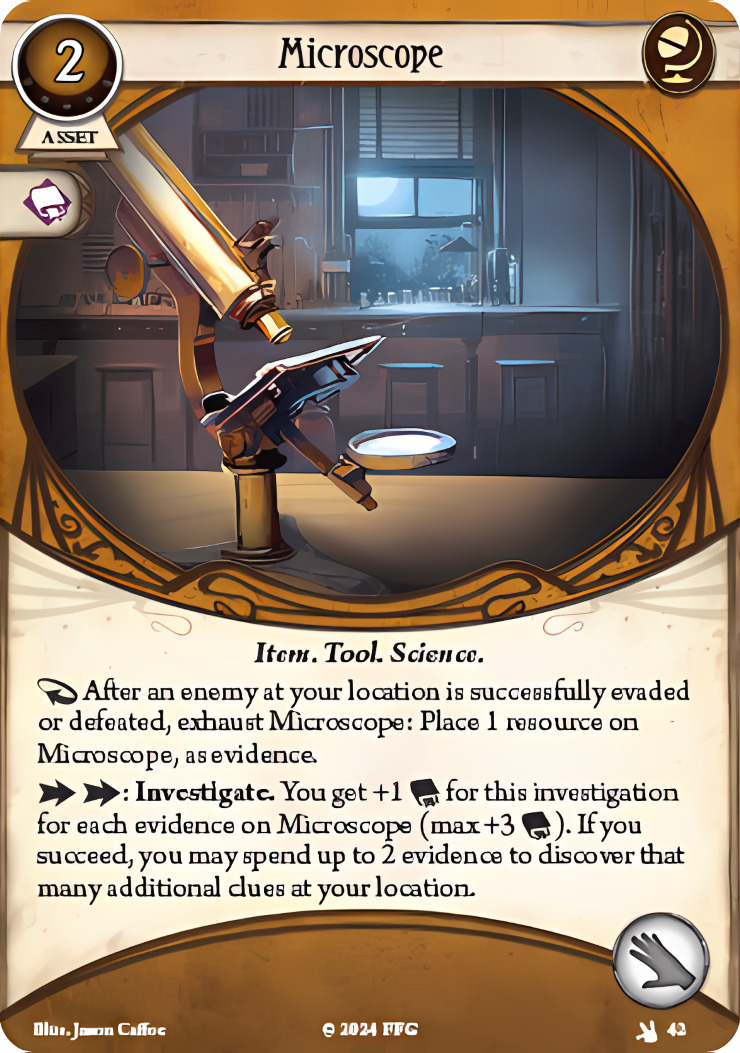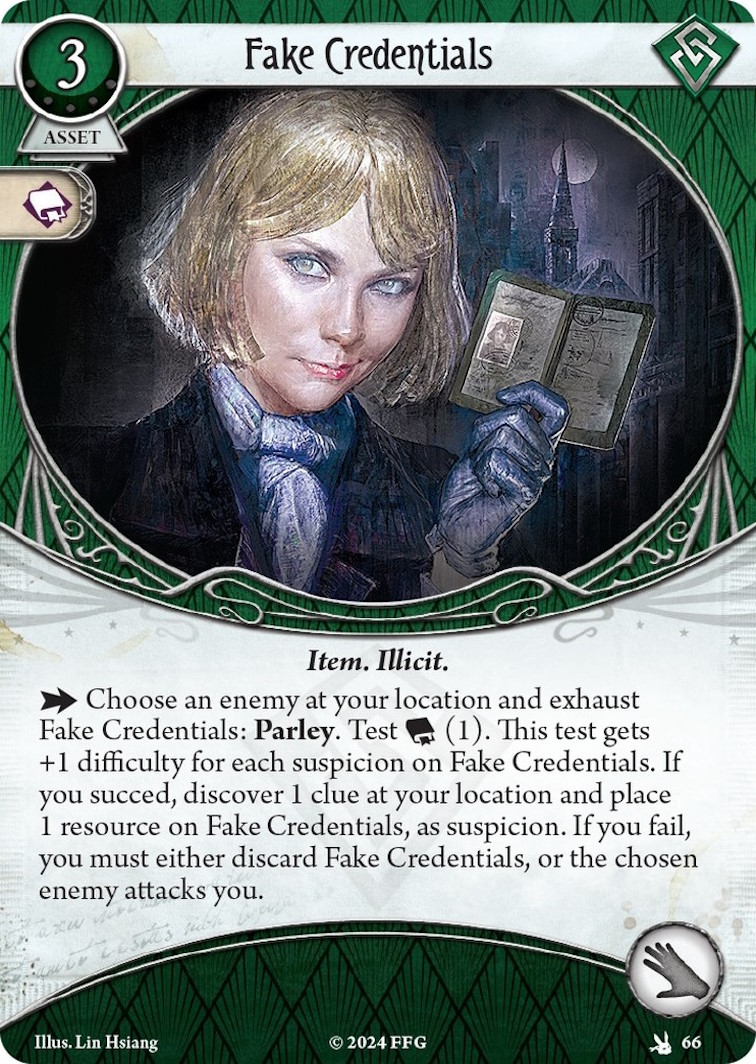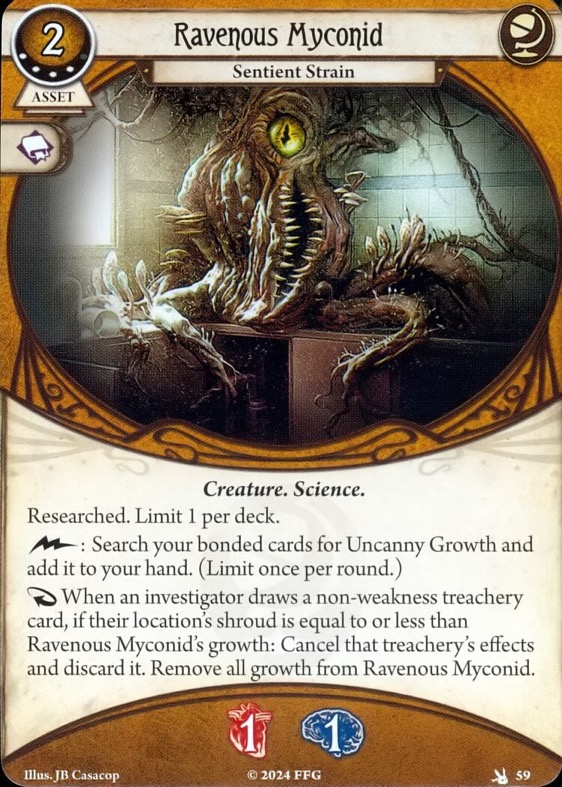
After some play, Microscope is quite an interesting card. It's a level 0 seeker card, meaning there are a number of characters who have access to it. For those who can consistently hit high-difficulty investigate attempts, Microscope isn't necessary - after all, it takes a while before it can compare to the efficiency of Fingerprint Kit, or the less conditional nature of Magnifying Glass. However, for those who want to assist with an investigation once in a while and who can spare a hand slot, or those who are filling a more flexible role, it's an inexpensive tool to fill that niche.
To start with the obvious, this probably isn't the go-to tool for those who already have high . Rather than risk a single draw that can go haywire, most primary cluevers will be able to boost their with more reliable tools including a stat-boosting ally and Magnifying Glass. This is probably overkill for those with 5 , though it can help bridge a gap for those who have 4 and don't want to dedicate themselves towards boosting it.
If you are taking this, you want to get it out early if possible. However, the condition for evidence isn't too bad - it's still reasonable when you draw this later game, and can bring this out during your turn before someone else fights on their turn. And one fight or evasion alone is enough for Microscope to break even on investigation attempts. It only needs 1 evidence to do its job - and two evidence is enough to push it to getting, scoring 3 clues with 2 actions. That means you only have to be near a few enemies when they're evaded or go down for this to be efficient. If you're the fighter, you'll likely get enough evidence on this to sweep a location every few rounds. If you're not the fighter, if an enemy spawns on you, chances are, the fighter is coming in and there'll be a dead enemy at your location soon. And if your fighter isn't there not, you might be buying time by evading the enemy - in which case, you'll still get the evidence.
And once that evidence is built up, it's potentially giving a +3 bonus on the test. That raises the investigation reliability to numbers that would normally require concerted effort. Even an off-investigator with 3 in a stat is able to make a check with 6 - that's enough to cover most common locations, and handle higher shroud locations with a minimal boost. With those numbers, even Roland Banks, Jim Culver, and Jenny Barnes can hit investigation checks with limited other support. Since this doesn't have a cap on the evidence it can gain, it can go wild for a number of turns, then be useful through a number of slow turns.
I think the ones who are most interested in this are characters with 3-4 int who don't want to dedicate more than one item for investigation. In addition, there are a few characters with particularly interesting synergy, Joe Diamond can slap these on along with the Detective's Colt 1911s to nail some difficult investigations between shooting things. Wilson Richards can use these as a source of a strong investigation, a bonus from his innate boost, and will likely use Tinker to reduce the overall slot concerns. Trish Scarborough is scoring future bonus clues off of those moments where she's helping through an evade. And, while it's hardly necessary for investigation purposes, Darrell Simmons can use this as one of the easiest sources of evidence this side of Empirical Hypothesis.
This isn't a tool that slots neatly into every cluever. However, for those who only want to grab clues once in a while, or for those who can only spare a few cards in their deck for investigations, this is worth a second look.



